The Port Authority of New York and New Jersey has reached an agreement with a coalition of financial sponsors to complete a $9.5 billion expansion of JFK International Airport. On December 13, Governor Kathy Hochul officially announced the project, which will include major infrastructure upgrades, the replacement of several aging terminals, new retail destinations, security improvements, and sustainability enhancements.
The full cost of the terminal will be privately financed by The New Terminal One coalition, or NTO, and includes financial partners Carlyle, JLC Infrastructure, and Ullico. NTO is supported by Reach Airports, a joint venture between Munich Airport International and Carlyle’s airport platform, CAG Holdings.
The design-build team includes Gensler and AECOM Tishman.
“Our airports are our portals to the globe, and they must be welcoming, safe, and representative of our dynamic, world-leading city,” said New York City mayor-elect Eric Adams. “This massive investment in JFK Airport will modernize our most important port, improve the travel experience for flyers, and inject billions of dollars into our local economy.”
The airport expansion is also referred to as The New Terminal One and will debut as JFK’s largest international terminal. Construction will replace existing Terminals One and Two and occupy the site of the former Terminal 3, which was demolished in 2013.
New areas within the terminal will include an additional 23 gates, significantly larger check-in and arrival areas with improved lighting, modernized lounge spaces, a bevy of dining and retail spaces, family-friendly amenities, and new green spaces.
Sustainability enhancements include the deployment of solar, hot water, and fluid recovery technology. The airport will also receive a fleet of electric-powered ground service vehicles, which include baggage tractors and belt loaders.
“For New York to remain competitive we must create good jobs by building 21st century infrastructure,” said Carlo A. Scissura, president and CEO of the New York Building Congress. “Governor Hochul’s announcement today will do exactly that. This renewed agreement will transform JFK into a world-class airport that will be the envy of the nation.”
Plans for The New Terminal One build on the momentum of the three additional expansion projects in various stages of development. In December 2019, construction broke ground for the expansion of JFK’s Terminal 8, a $425 million project led by American Airlines, which operates the terminal, and British Airways, which will be relocating to Terminal 8 from Terminal 7.
Construction of the new Terminal 6, located on the airport’s north side, is led by JFK Millennium Partners and will seamlessly connect with JetBlue’s existing Terminal 5. The project also includes demolition of the existing Terminal 7. Estimated costs hover around $3.9 billion. There’s also the $1.5 billion expansion of Terminal 4 led by Delta and JFK International Air Terminal. This project was approved in spring 2021 and is expected to begin construction soon.
The New Terminal One was initially scheduled to break ground in 2020, but due to the severe impact of the COVID-19 on air travel, the terms of the agreement were restructured. Today, construction of the new terminal is scheduled to begin in mid-2022. The first phase, which includes the new arrivals and departures hall and the first set of new gates, is expected to open in 2026.
“As we recover from this pandemic, I want to ensure that everyone traveling to New York has a welcoming and streamlined experience, and that New Yorkers have the modernized transportation hubs they deserve,” said Governor Hochul. “The time to get large infrastructure projects done is now, and I’m committed to getting JFK’s brand new Terminal One underway and completed as soon as possible.”
The project is expected to reach full completion by 2030.
Subscribe to YIMBY’s daily e-mail
Follow YIMBYgram for real-time photo updates
Like YIMBY on Facebook
Follow YIMBY’s Twitter for the latest in YIMBYnews

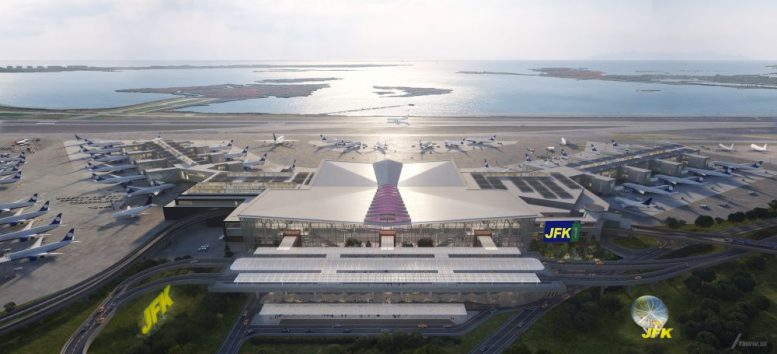
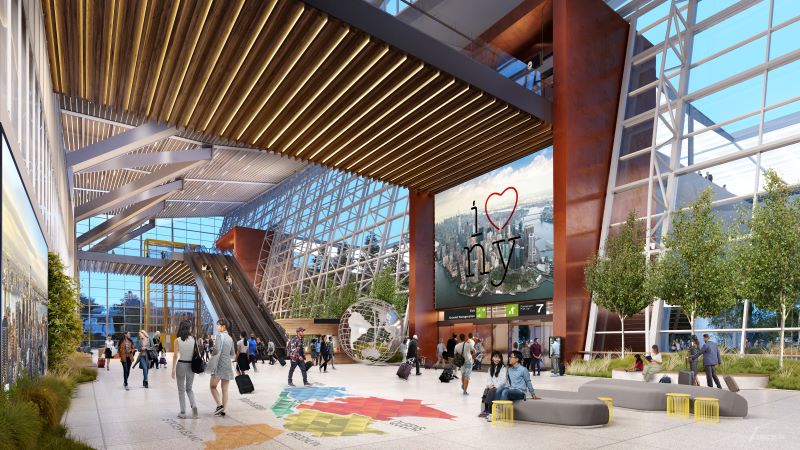
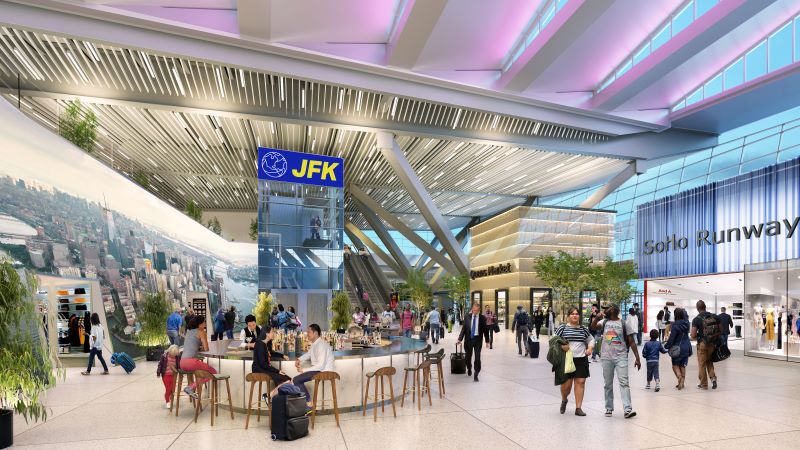
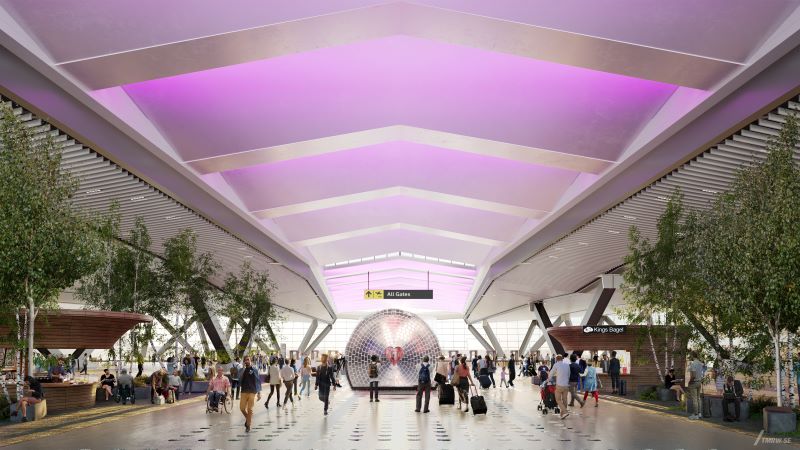
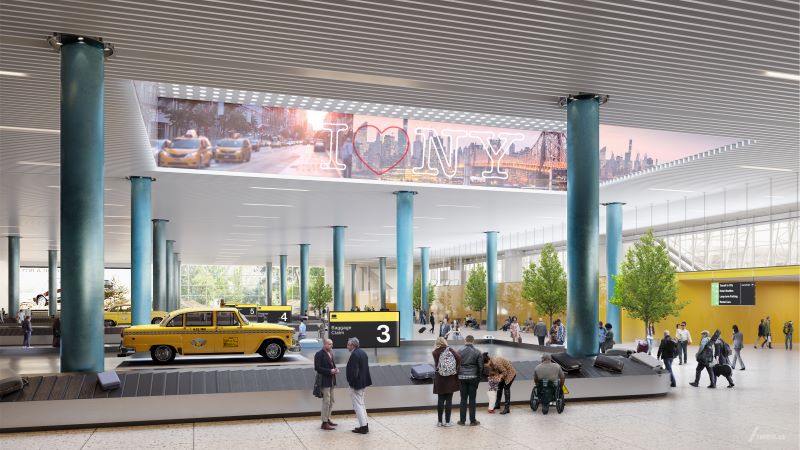




Built tunnels to NY first. Improve, train, subway, and bus terminals.
Whatever this means, I couldn’t agree more.
The Port Authority and MTA are two different agencies, with two different funding structures, with two different sets of stakeholders.
Also, this project is going to be mostly privately financed per the first paragraph in the article. I do agree though that the subways and train infrastructure should better utilize P3 financing.
This is private money.
Please see my comments below re significant government/taxpayer funded subsidies that are typically provided for terminal redevelopment projects at JFK and LaGuardia airports.
It’s nice to see not all of the interiors are airport-white. That look has been so overdone and is now dated. It’s even nicer to see climate change is being acknowledged. The rooftops of the entire airport complex should be covered with solar panels. And yes, all the service vehicles should be electric powered. This is how the airline industry can begin to address their carbon footprint.
The holy grail: a super-fast rail link to Manhattan.
Alas, NOT likely in our lifetimes. 🙁
But, hey, one can dream…
We make that decision.
Assuming the project is financed in whole or in part using tax exempt bonds (for example, Empire State Development Corp; Industrial Development Authority; etc.), plus of course, there is a substantial portion of roadways and related work being undertaken by the Port Authority of New York & New Jersey, to say the project is entirely “privately financed” is not exactly correct, since of course, tax exempt bonds issued by NY State or City via “special purpose” entities (typically agencies such as Empire State Development or similar) are taxpayer subsidies in that they provide below market interest rates (lower cost of capital) than otherwise available to most private businesses.
Additionally, with NY City being the actual owner of JFK and LaGuardia airports, corporate entities that sublease* on airport facilities (passenger terminals, cargo buildings, maintenance hangars, etc.) from PANYNJ enjoy many sales tax exemptions owing to government ownership for repairs and maintenance that most other private companies do not have.
Further, projects financed using ESD/IDA, typically include an array of sales tax exemptions, which are another form of government/taxpayer financed subsidies.
Further, the roadway, ramps and related improvements done by PANYNJ are also typically funded by tax exempt bonds, which in this case is not just a government agency offering below market interest loans (as ESD/IDA are, which the borrower pays back over the loan term), but in fact, is an asset built/paid for by the government agency that the private entities derive a benefit from, even if some of the cost is recouped over the sublease* term via rent payments, etc.
So, again, claims that this, or any of the major terminal redevelopment projects at JFK and LaGuardia airports are entirely “privately financed” are not exactly true.
How do I know this?
Because I was the Principal Researcher for several JFK airport redevelopment projects for 2 years, with my work specifically including the introduction of an array of sales tax exemptions for projects financed using what were then called Industrial Development Agency (IDA) funding (tax exempt bonds), but now also includes other special purpose entities via Empire State Development Corp., etc.
*Finally, although JFK and LaGuardia airport projects are commonly presented as lessor-lessee, with PANYNJ the lessor and the terminal operator (be it airlines [less common now than in years/decades past] or some other corporate entity [this has become predominant in recent years, especially at JFK plus LGA Terminal B]) the lessee, technically speaking, with NY City the owner of both airports, the city is the owner/lessor, PANYNJ is the lessee, while those that manage/operate passenger terminals (or other on airport operations) sublease their facilities from PANYNJ. To wit, in no way, shape or form do airlines or the private terminal operators/managers “own” the buildings they occupy.
One final note: highly regarded airline industry expert, Brett Snyder, better known to some as “Cranky Flier”, said the $9.5 billion cost for NTO comes to $685 million PER GATE – which, as I’m confident most will agree, is exceptionally, even obscenely, expensive!